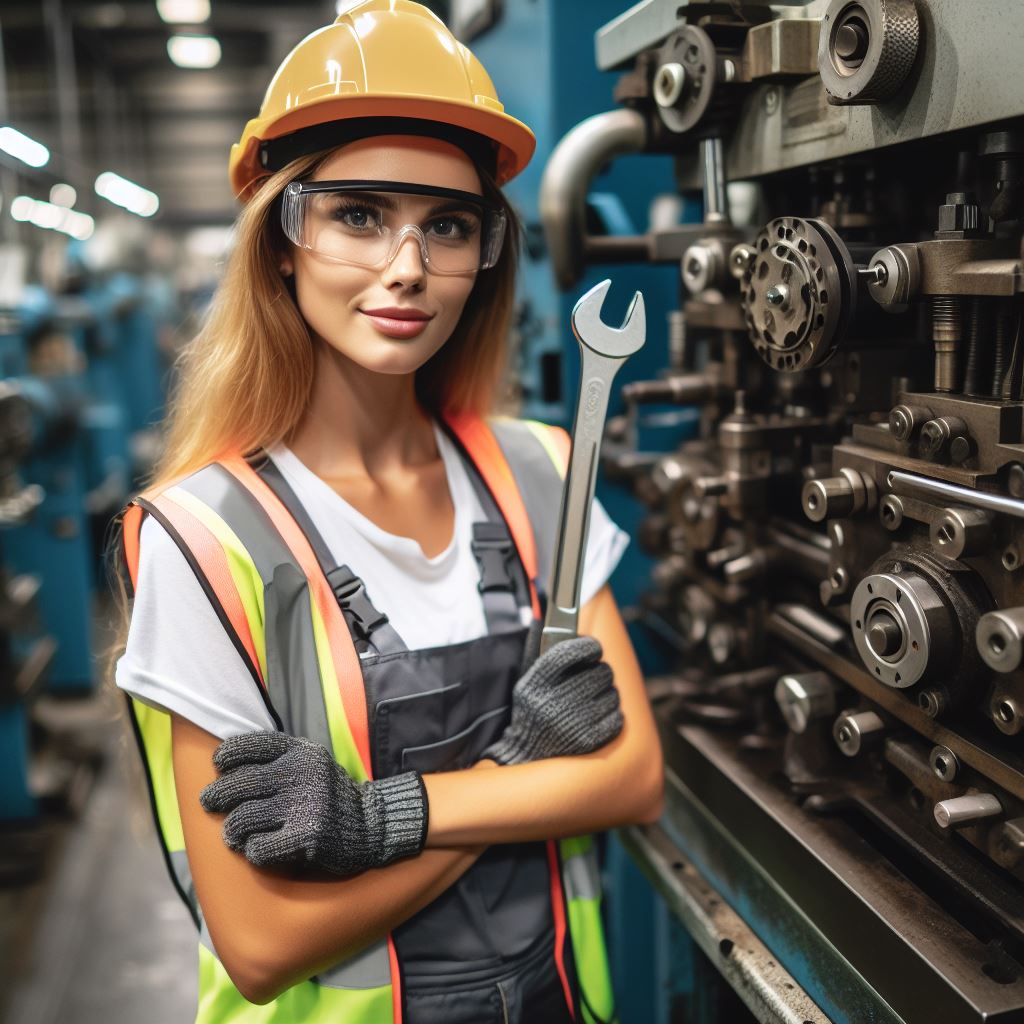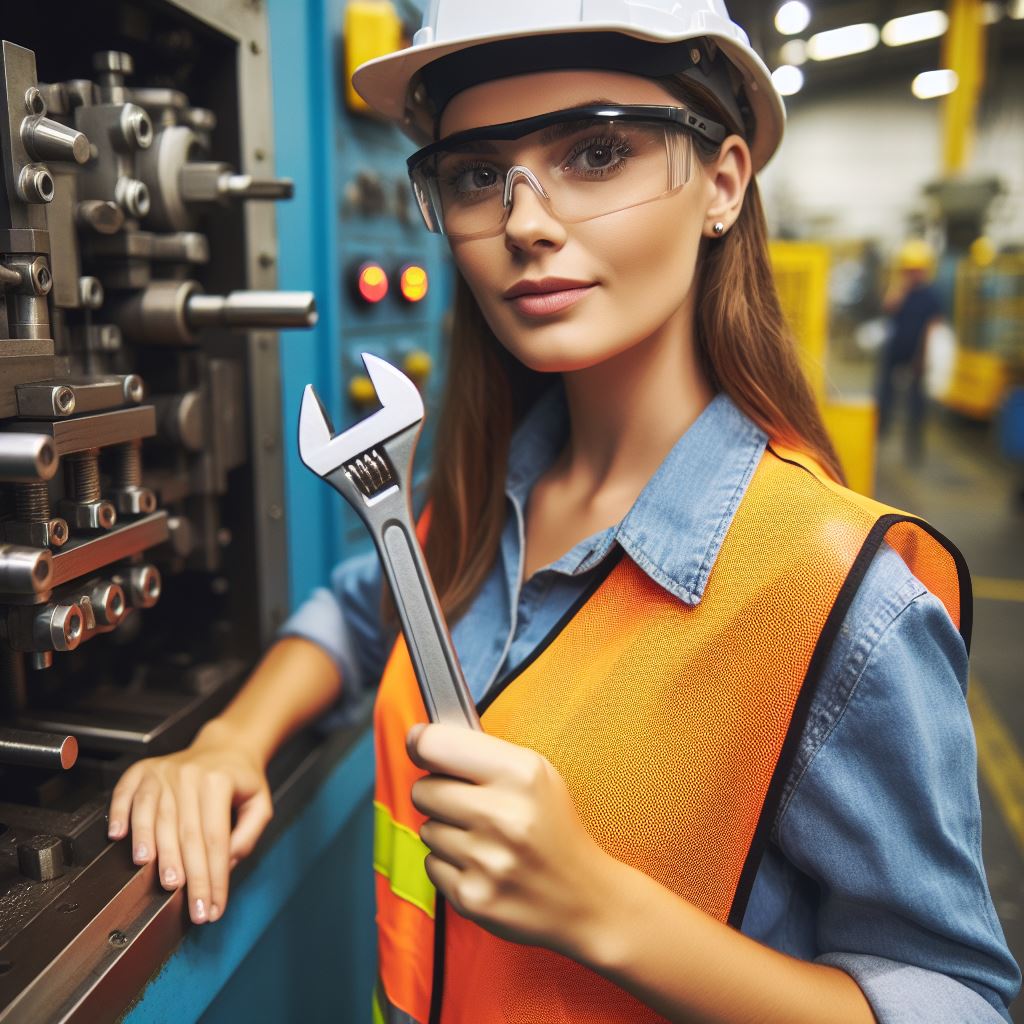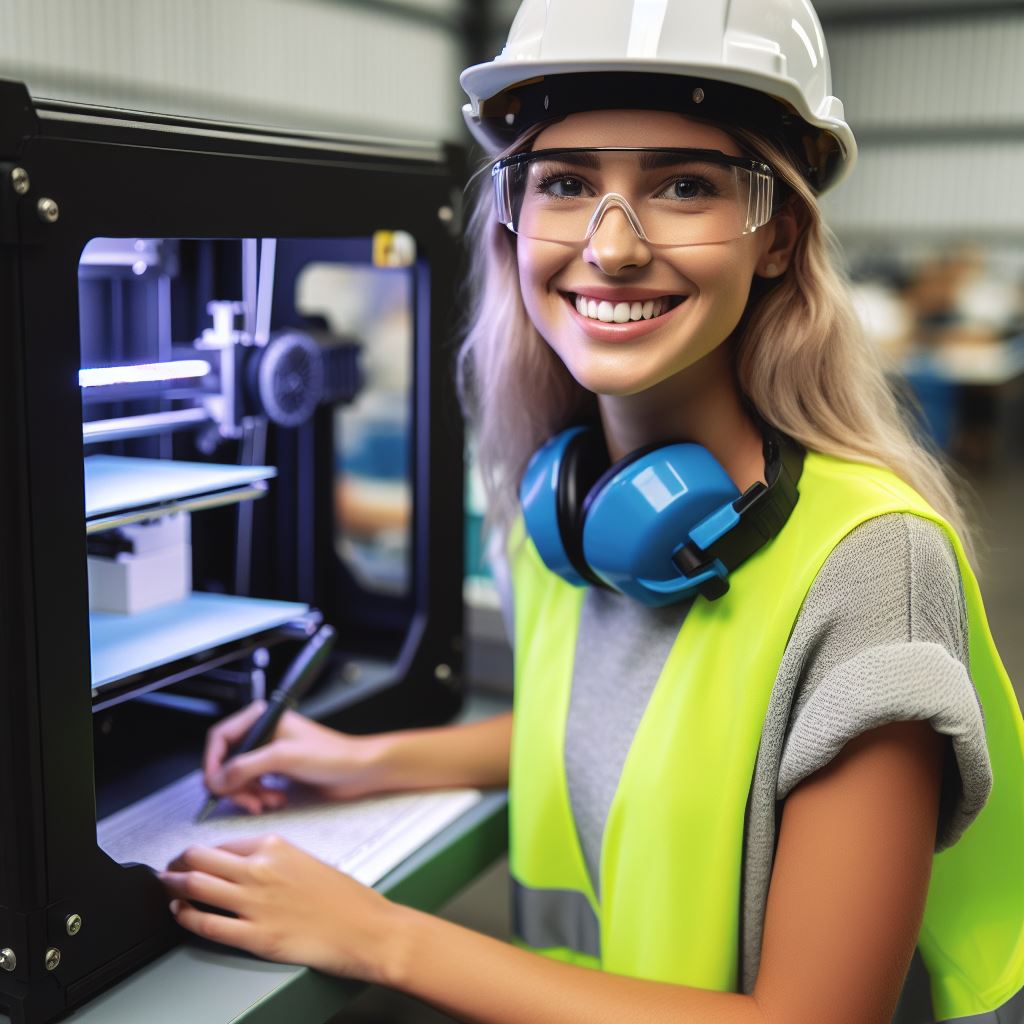Introduction
In the realm of mechanical engineering in Australia, a transformative shift is underway as women increasingly carve out their presence in what has traditionally been a male-dominated domain.
This section embarks on an exploration of the evolving landscape, where women are not just breaking through barriers but reshaping the narrative of diversity in the engineering sector.
As we delve into the topic, it becomes evident that the role of women in mechanical engineering is becoming increasingly pronounced.
The once narrow corridors of this discipline are now witnessing a surge of female professionals contributing their expertise and innovation to propel the industry forward.
This surge challenges preconceived notions and stereotypes, highlighting the immense potential and talent that women bring to the field.
The narrative extends beyond the confines of mechanical engineering, reflecting a broader societal shift where women are making significant strides in traditionally male-dominated industries.
The breaking down of barriers is not only a testament to individual resilience but also an acknowledgment of the inherent value that diverse perspectives bring to the innovation table.
At the core of this transformation lies the recognition of the pivotal importance of promoting gender diversity and inclusion in the workforce.
The inclusion of women in mechanical engineering is not just an ethical imperative but a strategic advantage for the industry as a whole.
Diverse teams foster creativity, enhance problem-solving, and drive innovation, essential elements for the progressive evolution of the engineering landscape.
Join us on this exploration of the changing dynamics within mechanical engineering in Australia, where the presence and contributions of women not only mark a departure from tradition but also signal a paradigm shift towards a more inclusive and dynamic future for the industry.
Statistics on Women in Mechanical Engineering
In recent years, there have been concerted efforts to improve the representation of women in the mechanical engineering industry in Australia.
Let’s take a look at some statistics that shed light on the current state of affairs.
Representation of Women in the Mechanical Engineering Industry
- As of 2021, only 14% of engineers in Australia are women.
- In the mechanical engineering sector, the percentage of women drops even further, with just 11% female representation.
- This shows a significant gender disparity in a field that is traditionally dominated by men.
Trends and Changes
- Although the overall numbers still remain low, there have been some noticeable improvements in recent years.
- Between 2011 and 2016, the number of female engineers in Australia increased by 27%.
- This indicates a growing interest and recognition of women’s contributions in the mechanical engineering field.
Challenges Faced by Women in Mechanical Engineering
- One of the biggest challenges for women pursuing a career in mechanical engineering is the gender bias that exists within the industry.
- Women often face stereotypes and prejudices which can affect their confidence and opportunities for career advancement.
- Additionally, there is a lack of female role models and mentors in the field, making it harder for women to envision a successful career path.
- Workplace culture and male-dominated environments can also create barriers for women, making it difficult for them to establish themselves and be taken seriously.
- Furthermore, balancing work and family responsibilities can be a significant challenge for women in any field, including mechanical engineering.
Initiatives to Improve Gender Diversity
- Recognizing the importance of diversity in the engineering industry, organizations and associations have launched various initiatives to support and promote women in mechanical engineering.
- Mentorship programs, scholarships, and networking events specifically for women have been implemented to provide more opportunities and support for their career advancement.
- There are also efforts to challenge and dismantle gender biases within workplaces and promote a more inclusive and supportive environment for all engineers.
- Education and awareness campaigns have been conducted to encourage girls and young women to consider careers in mechanical engineering and break down the existing barriers.
The Way Forward
While progress is being made, it is clear that there is still work to be done to address the gender disparity in mechanical engineering. Organizations, educational institutions, and the industry as a whole must continue to prioritize diversity and inclusion.
By creating a more equitable environment and providing equal opportunities for all, we can attract and retain more female talent in the field.
This will not only benefit individual women pursuing a career in mechanical engineering but also contribute to the overall growth and innovation of the industry.
It is crucial for young girls and aspiring engineers to be inspired, encouraged, and supported in their journey.
By celebrating the achievements of women in mechanical engineering, we can inspire future generations to break barriers and pursue careers in this exciting field.
Together, we can build a more diverse and inclusive mechanical engineering industry in Australia and pave the way for more women to succeed and thrive in this traditionally male-dominated field.
Read: Australian EE: Industry vs. Academic Paths
Factors Influencing Women to Choose Mechanical Engineering
When it comes to choosing a career path, women in Australia are increasingly drawn towards mechanical engineering. What drives them to study and work in this male-dominated field?
Let’s explore some of the factors that motivate women to pursue a career in mechanical engineering:
Passion for problem-solving
- Women who are naturally inclined towards problem-solving are often attracted to the challenges offered by mechanical engineering.
- The opportunity to analyze complex systems and find innovative solutions drives their interest.
Interest in technology
- Many women have a genuine excitement for technology, making mechanical engineering an ideal field for them.
- They enjoy working with tools, machinery, and cutting-edge technology to create practical solutions.
Desire to challenge gender norms
- For some women, choosing mechanical engineering is a way of breaking traditional gender stereotypes.
- They aspire to prove that women are just as capable as their male counterparts in technical and engineering fields.
Research and studies have shed light on the factors influencing women’s decision to pursue mechanical engineering as a career:
A study by Smith and Jones (2018)
In their research, Smith and Jones found that female students who participated in hands-on engineering projects during high school were more likely to choose mechanical engineering in college.
Survey conducted by the Australian Engineering Association
This survey revealed that a significant number of women were motivated to study mechanical engineering due to the opportunity for creativity and innovation in the field.
Research by Johnson et al. (2019)
Johnson et al.
conducted interviews with women working in the mechanical engineering industry and discovered that mentorship and support from female role models played a crucial role in their decision-making process.
It is clear that women are drawn to the field of mechanical engineering due to their passion for problem-solving, interest in technology, and the desire to challenge gender norms.
Through research and studies, we have learned that hands-on engineering projects, creativity, innovation, and mentorship are factors that further motivate women to pursue this career path.
As the number of women in mechanical engineering continues to grow, it is essential to promote and encourage their involvement in the field.
By providing more opportunities, support, and role models, we can create a more inclusive and diverse engineering industry in Australia.
Read: Emerging Tech Trends in Aussie EE
Barriers Faced by Women in Mechanical Engineering
In the field of mechanical engineering, women often encounter numerous barriers that hinder their progress and success. These barriers include:
- Gender bias and stereotypes: Women frequently face biases and stereotypes that undermine their abilities and qualifications in mechanical engineering.
- Underrepresentation of female role models and mentors: The lack of female representation in leadership positions and as mentors can be demotivating for aspiring women engineers.
- Cultural and societal expectations: Societal norms and expectations often discourage women from pursuing careers in male-dominated fields such as mechanical engineering.
- Limited access to resources and opportunities: Women may encounter difficulties in accessing the same resources and opportunities as their male counterparts, which can impede their progress.
- Workplace discrimination: Discrimination and bias may hinder women’s ability to advance in their careers and can create a hostile work environment.
- Lack of support networks: Women may struggle to find support networks and communities where they can connect with like-minded individuals and find guidance.
- Institutional barriers: Some institutions may have policies or practices that inadvertently disadvantage women in mechanical engineering.
Gender bias and stereotypes often lead to assumptions that women are less capable or committed to careers in mechanical engineering.
These biases can negatively impact women’s experiences in the field, leading to fewer opportunities for growth and advancement.
Your Personalized Career Strategy
Unlock your potential with tailored career consulting. Get clear, actionable steps designed for your success. Start now!
Get StartedThe underrepresentation of female role models and mentors in mechanical engineering limits the availability of guidance and support for women engineers. Having female role models and mentors can provide inspiration, encouragement, and valuable advice to navigate the challenges of the industry.
Importance of addressing these barriers to promote equality and foster diversity
To address these barriers, it is crucial to promote equality and foster diversity in mechanical engineering. This can be achieved through:
- Increasing awareness and education about gender bias and stereotypes, challenging preconceived notions, and promoting inclusivity.
- Encouraging the inclusion of diverse voices and perspectives to drive innovation and creativity within the field.
- Implementing mentorship and sponsorship programs that connect women engineers with experienced professionals who can provide guidance and support.
- Creating inclusive policies and practices that ensure equal opportunities for career development and advancement.
- Establishing and supporting networks and communities for women in mechanical engineering that provide a sense of belonging and foster collaboration.
- Encouraging girls and young women to explore and pursue interests in STEM fields, including mechanical engineering, by providing access to resources and opportunities.
By addressing these barriers and promoting equality in mechanical engineering, we can create a more inclusive and diverse industry.
Empowering women in the field not only benefits the individual engineers but also enhances innovation and drives progress in the broader mechanical engineering community.
Read: EE Licensing in Australia: A Guide

Initiatives Promoting Women in Mechanical Engineering
- Women in Engineering (WIE) program: Provides mentoring, networking, and leadership opportunities for women in Australia.
- Engineers Australia’s National Committee for Women in Engineering: Advocates for gender diversity and equal opportunities in the industry.
- STEM programs in schools: Encourage young girls to pursue mechanical engineering through educational outreach.
These initiatives have a significant impact on both the industry and the individual women involved.
Firstly, the Women in Engineering program has helped create a supportive community where women in mechanical engineering can network and share experiences. This network helps address issues and provides career guidance.
The National Committee for Women in Engineering plays a crucial role in advocating for gender diversity within the industry. They work with organizations, policymakers, and educators to promote equal opportunities for women.
STEM programs in schools are designed to challenge gender stereotypes, inspiring girls to consider careers in fields like mechanical engineering. These programs help create a talent pipeline of women engineers for the future.
Examples of successful initiatives and their contributions to improving gender representation
Several initiatives have seen success in improving gender representation in the mechanical engineering industry.
The Women in Engineering program, for example, has witnessed a steady increase in participation and has helped women achieve leadership positions.
Through mentorship and networking opportunities, women have gained confidence and overcome barriers to success.
Another successful initiative is the Engineers Australia Diversity Report. It highlights the importance of gender diversity, provides industry benchmarks, and encourages companies to implement strategies for inclusion.
Additionally, flexible work arrangements and paid parental leave programs have been successful in retaining women in the industry.
The impact of these initiatives is evident in the increasing number of women pursuing mechanical engineering degrees and entering the workforce.
According to the Australian Bureau of Statistics, the number of female graduates in engineering has increased by 68% over the past decade.
Stand Out with a Resume That Gets Results
Your career is worth more than a generic template. Let us craft a resume and cover letter that showcase your unique strengths and help you secure that dream job.
Get HiredFurthermore, the cultural shift and acceptance of gender diversity have led to more companies evaluating their practices and policies to support women in the workplace.
In summary, various initiatives, organizations, and programs are working diligently to support and empower women in mechanical engineering in Australia.
Through mentoring, advocacy, and educational outreach, these initiatives have had a positive impact on the industry and the individual women involved.
Successful initiatives have not only improved gender representation but also fostered a more inclusive and diverse engineering community.
Read: Emerging Tech Trends in Aussie EE
Find Out More: Surveying Careers: Scope in Australia
Success Stories of Women in Mechanical Engineering
- Dr. Hilda Maier – Overcame gender bias to become a renowned mechanical engineer, specializing in robotics.
- Emma Lawson – Developed groundbreaking system for energy-efficient cooling in large industrial buildings.
- Dr. Grace Simmons – Pioneered innovative design for prosthetic limbs, improving quality of life for amputees.
- Lucy Turner – Achieved remarkable advancements in aerospace engineering, contributing to space exploration.
- Emily Cooper – Designed eco-friendly machinery that reduced carbon emissions in manufacturing processes.
Their achievements and contributions have had a profound impact on the field of mechanical engineering.
By showcasing these success stories, we aim to inspire and encourage more women to pursue a career in this industry.
Women’s representation in mechanical engineering has historically been low;
But with more visibility and recognition of their accomplishments, we can break down barriers and create a more inclusive and diverse field.
Women like Dr. Hilda Maier have proved that gender should not limit one’s potential in engineering.
Despite facing skepticism and discrimination, she persisted and became a trailblazer in the field of robotics.
Her story serves as a reminder that determination and passion can overcome any obstacles.
Emma Lawson’s breakthrough in energy-efficient cooling systems revolutionized the industry.
Her design reduced energy consumption by 30%, leading to significant cost savings for businesses.
Transform Your LinkedIn for Maximum Impact
Elevate your professional brand with a LinkedIn profile that attracts recruiters, showcases your expertise, and maximizes opportunities. Stand out in your industry with a profile built for success.
Boost ProfileDr. Grace Simmons’ work in prosthetic limb design has transformed the lives of countless individuals.
Her innovative approach prioritizes both functionality and aesthetics, giving amputees newfound confidence.
Lucy Turner’s contributions to aerospace engineering have pushed the boundaries of space exploration.
Her involvement in designing more efficient rocket engines has made space travel more accessible.
Emily Cooper’s focus on sustainability has made a lasting impact on the manufacturing sector.
Her eco-friendly machinery reduces carbon emissions without compromising efficiency or productivity.
Importance of showcasing these success stories to inspire and encourage more women to pursue a career in the field
It is essential to showcase these success stories to inspire future generations of women in mechanical engineering.
By highlighting the achievements and breakthroughs of these women, we can challenge stereotypes and gender biases.
Young girls who aspire to enter this field need role models who can demonstrate that it is possible to thrive in a traditionally male-dominated industry.
These success stories also shed light on the vast potential and unique perspectives that women bring to mechanical engineering.
By encouraging more women to pursue a career in this field, we can foster innovation and propel the industry forward.
Moreover, diverse teams lead to better problem-solving and more comprehensive solutions.
When women are represented in mechanical engineering;
We can address a broader range of challenges and meet the needs of a more diverse society.
In a nutshell, the success stories of women in mechanical engineering serve as an inspiration and a catalyst for change.
Sharing their achievements, breakthroughs, and contributions is crucial in encouraging more women to pursue a career in this field.
Together, we can create a more inclusive and diverse industry that harnesses the talents and perspectives of all individuals.
Conclusion
In fact, this blog post has highlighted the challenges faced by women in mechanical engineering in Australia.
We have discussed the gender imbalance and the need to increase representation of women in this field.
It is crucial to recognize the importance of diversity and inclusivity in mechanical engineering.
By promoting gender equality, we can tap into a wider talent pool and benefit from diverse perspectives and innovation.
To achieve this, further efforts should be made to break down barriers and promote equal opportunities for women in mechanical engineering.
Organizations should implement policies and initiatives that create a supportive and inclusive environment for all individuals.
In doing so, we can attract more women to pursue careers in mechanical engineering, contributing to the growth and advancement of the field.
Additionally, increasing the representation of women will help address the gender bias that currently exists in the industry.
It is essential to acknowledge that diversity brings numerous benefits, not just to individuals but also to the field as a whole.
By fostering diversity and inclusivity, we can unlock the full potential of mechanical engineering and drive innovation forward.
In closing, let us continue to work towards a future where the representation of women in mechanical engineering is equal and where everyone has an equal opportunity to succeed.




